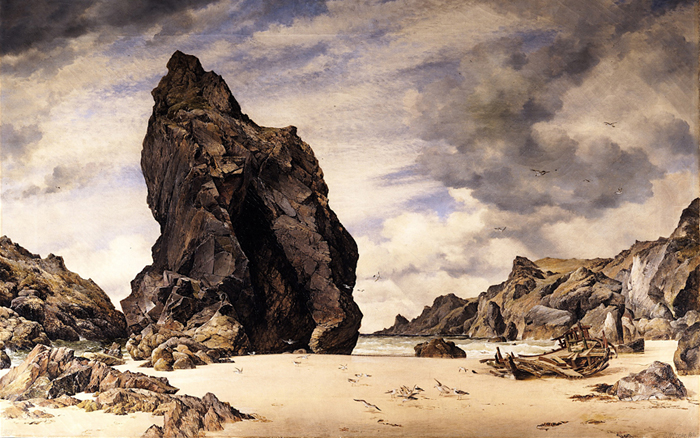|
KENNY SCHACHTER ROVE Britannia Street |
|
| Richard Long, Damien Hirst, André Derain, Olafur Eliasson, Lee Maelzer, Tamsin Morse, Eugéne Delacroix, Gustave Courbet, Hirano Gogaku, Bryan Wynter, Keith Tyson, Edward William Cooke, R.A., F.R.S., Thomas Daniell R.A. and William Daniell R.A., Tristram Hillier, Yunoki Gyokuson, Bill Brandt, David Hockney, John Piper, James Ward, R.A., Nick Waplington, Paul Thek, David Parker, Lan Ying, Friedrich Nerly, Stephen Vaughan, Darren Almond, Jannis Kounellis, Rupert Norfolk, Peter Beard, Roger Fenton, Jonathan Wateridge, Tomioka Tessai, Koen van den Broek, Barry Flanagan, Lucas Van Valckenborch, Mariana Cook, Lucien Hervé | |
 |
|
 |
|
|
Since our time on earth began, we have had a strong affiliation with rocks and stones. We have dwelt within them, carved upon them, marked tombs with them, dragged them up mountains, worshipped with them, and ascribed power to them. Many people today look for stones of special beauty, aborigines believe their ‘sacred stones’ contain spirits of the dead, Hindus pass special stones from father to son believed to have magical powers, the holiest sanctuary of Islam is the Ka’aba, the black stone in Mecca, Christ is the ‘spiritual rock’ (1Cor. X:4), alchemists seek the ‘philosopher’s stone’, something that can never be lost or dissolved. The eternal quality of stones and rocks means they have come to symbolise the core of the self - complete, unchanging, lasting. It is as if stones contain a living mystery for us. A stone symbolises the deepest and simplest human experience, something so appealing because it is unchanging and unalterable. It is this seemingly static nature of rocks, which form part of a timeless structure that pins the world together – and yet all the while the wind and the weather and the passage of time rub strange and beautiful imprints on each and every necessarily unique rocky surface. In ‘Between a Rock and a Hard Place’, Danny Moynihan collates eastern and western representations of stones in art from the Renaissance to the modern day in homage to this sepulchral sombre ancient magical matter of rock and stone. These art works operate in the same way perhaps that ancient Chinese scholar stones conjure a valuable metaphor for the viewer. These scholar stones would be chosen because they represented a landscape, they would be brought from the exterior realm of nature into the interior realm as analogies of that exterior. Thus they were tools for the imagination to meditate, a path for the mind to connect inner with outer, micro with macro, the self with the world. These works are a testament to the uncanny pull of rocks, the stillness, the divinity, the allure. These rocks and stones represent our landscape, the exterior matter against which we define ourselves and each art work opens up a dialogue between man and his world, artist and landscape, object and representation of object. For press images or further information please contact: Simon Parris +44 (0)7789 348 584 / simon@rovetv.net
LIST OF WORKS Peter Beard Barry Flanagan Lee Maelzer Stephen Vaughan Olafur Eliasson Koen van den Broek Andre Derain (1880-1954) Nick Waplington Friedrich Nerly (1807 – 1878) Roger Fenton Circle of Adrian Zingg (1734-1816) James Ward R.A. Darren Almond Gustave Courbet James McDonald Chinese Dream Stone Panel Eugene Delacroix Anonymous Chinese Scholar’s Rock (Seated figure) Bryan Wynter (1915-1975) David Parker Chinese Scholar’s Rock (Lingbi stone) Lucien Hervé John Piper Constantin Brancusi Rupert Norfolk David Hockney Lan Ying (Chinese, 1585 – c.1664) Danny Moynihan Danny Moynihan Danny Moynihan Danny Moynihan Danny Moynihan Winged Chinese Scholar’s rock Danny Moynihan Damien Hirst Richard Long Mariana Cook Japanese spiritual Tortoise Stone Bill Brandt Thomas Daniell R.A. and William Daniell R.A. (1749-1840 & 1769-1837) Hirano Gogaku Jonathan Wateridge Paul Thek Lucas Van Valckenborch Tristram Hillier (1905 -1983) Tamsin Morse Keith Tyson Jannis Kounellis Edward William Cooke, R.A., F.R.S. (1811-1880) Meteorite |
|
